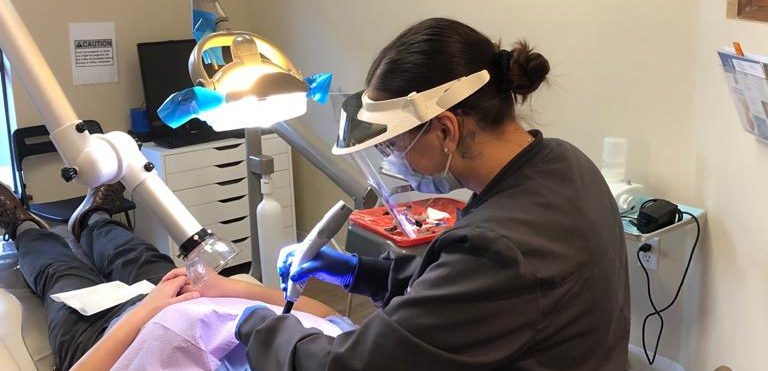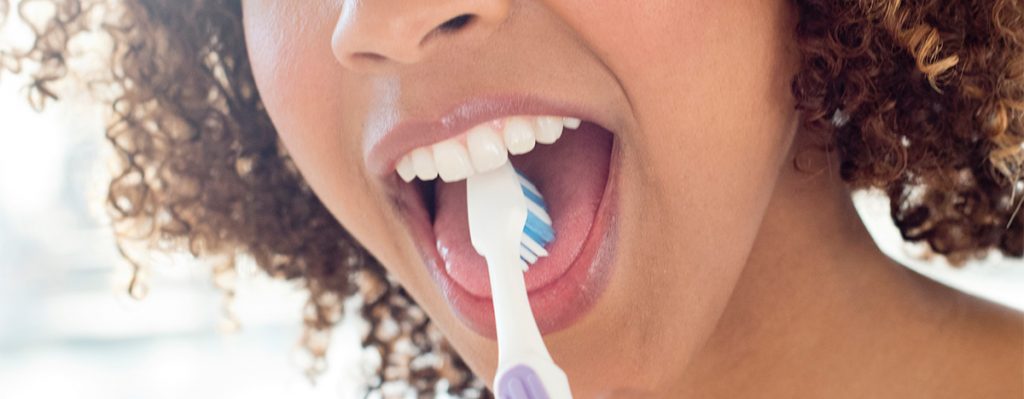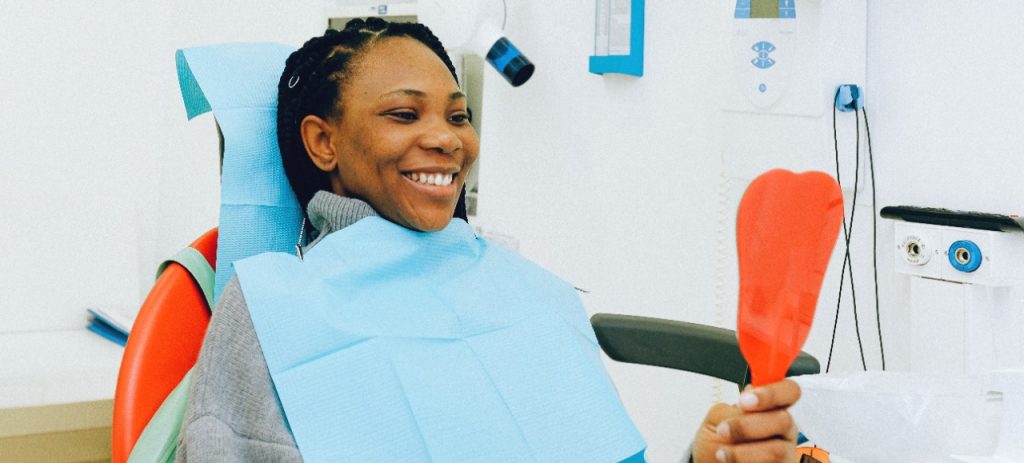Date : 04/04/2020
If it’s not your baby teeth, losing one of your teeth can be embarrassing, and you may think immediately about tooth replacement options. After all, our society puts pressure on people to always look and feel their best. Indeed, having a beautiful smile gives us a healthy appearance. Unfortunately, tooth loss can happen to anyone for a variety of reasons. Losing one tooth is bad enough, but what if you lost several teeth?
The good news is that because of modern dentistry, there are tooth replacement options for your missing teeth. Whether it’s a bridge, a partial, or an implant, you have tooth replacement choices that will keep you feeling like your old self when you eat, smile, or have a conversation.
What Is Normal Tooth Loss?
Tooth loss is a normal process for children, as it happens a few times during childhood when baby teeth — called primary teeth — are replaced with their permanent, adult-sized teeth.
We start to get our permanent teeth at around age 6 or 7 years. That’s when our first permanent molar comes in after we lose our central incisors. The natural replacement of our baby teeth continues until around age 12.
Trading in the baby teeth
Natural tooth loss in children rarely requires a dentist to intervene unless the new teeth are growing back in such a way that causes significant pain or other dental issues.
However, it’s essential for your child to start seeing a dentist, even as the baby teeth are coming in. This is because the enamel sometimes doesn’t develop right away, and the dentist will suggest using a sealant to prevent the early onset of cavities. Starting out with cavities means there’s more of a risk of tooth loss later, so using a sealant early on may be a great option.
Ultimately, once all the adult teeth grow in, we should have a total of 32 permanent teeth. And if our teeth don’t all grow in, for whatever reason, there are always tooth replacement options to consider.
Other Causes of Tooth Loss
Along with the natural and normal tooth loss in childhood, there are other reasons for tooth loss in adults, or even in the permanent teeth of children. These causes include:
- Dental avulsion
- Tooth decay
- Gum disease
- Trauma
- Medical conditions
- Grinding teeth
Tooth Loss Prevention
Proper oral hygiene can help prevent tooth loss and keep your mouth and gums healthy. There are a few simple rules to follow when you brush your teeth.
Daily oral care
First, brush a minimum of twice a day, once in the morning and again before bed. Make sure to spend at least two minutes on each section of your mouth, holding your toothbrush at a 45-degree angle.
It’s essential to pay attention and brush the surface of each tooth for maximum effectiveness.
Next, floss between your teeth to get rid of any excess food that got stuck. Flossing also helps loosen the plaque that builds up, causing decay. You may save the need for tooth replacement options by flossing your teeth effectively.
Get the hard to reach places
Also, if you have crowns, implants, or bridges, don’t neglect these areas. There are special tools to use for flossing your dental work available at any drugstore. For example, threaders allow you to get around and under dental work to keep your gums clean and healthy.
Don’t forget
You can use mouthwash to rinse after eating acidic and sugary foods, as well as after you’ve flossed your teeth. Or any time you want fresh breath.
And don’t forget to brush your tongue, because this will help your breath stay fresh as much as using mouthwash. Not to mention, your tongue carries loads of bacteria, so cleaning it makes sense.
Protect Your Teeth
This makes all the difference:
Try to see a dentist and hygienist for exams and cleanings at least twice a year if possible. Taking care of your specific oral needs is key to preventing tooth decay and ultimately, tooth loss.
Some other considerations are things such as playing contact sports. There’s always the potential for mouth trauma when participating in a contact sport, so using a mouth guard is vital in protecting your teeth.
One more thing to think about is whether or not you inadvertently grind your teeth. We sometimes grind our teeth if we’re anxious; however, some chronic teeth grinders even do so in their sleep. If grinding your teeth is something you often do, and you wake up with a sore jaw, a mouth guard will help prevent damage and jaw pain.
Protective gear
Considering how mouth trauma and teeth grinding affect your teeth, it may be a good idea to get an inexpensive night guard from a pharmacy.
Alternatively, you can check with your dentist who will either mold a custom mouth guard or give you a referral.
Reasons for Tooth Loss
Think about it:
Many of the foods we eat cause yellow teeth, and they also break down the enamel. If we have poor dental hygiene and we smoke and drink, we’re prime candidates to develop gum disease. Periodontitis, AKA gum disease, is the leading cause of tooth loss in the United States.
Signs of gum disease
If your gums are swollen and red, or if they hurt when you brush your teeth, these are symptoms of periodontitis. You may also see blood when you’re brushing your teeth, have receding gums, and issues with bad breath.
But that’s not all —
Some additional things that put you at risk for gum disease are age, certain medications such as antibiotics, pregnancy, broken fillings, and genetics.
Risks When You Don’t Replace a Tooth
Several risks affect your body if you don’t choose one of the tooth replacement options. Some of them are more severe than others. It’s worth understanding what’s involved if you do nothing about your missing tooth.
When you lose a tooth, it can cause long-term problems with not only your oral health but also your overall body health. You may experience bone loss in your mouth, jaw issues, saggy cheeks, trouble eating, and speech problems. You may become more self-conscious in public and decide it’s time to review the tooth replacement options.
Difficulty eating and digesting
As if losing your teeth isn’t enough —
Eating is a huge part of healthy living; missing teeth will affect how and what you eat. In other words, you might have to alter what you eat and stick to soft foods. Giving up crunchy or harder textured foods cuts a significant amount of meat, fruits, and vegetables from your diet. Unchewed food will also disrupt your digestion and may cause stomach problems if you do nothing and don’t think about tooth replacement options.
Speech problems
But that’s just part of the story. If you don’t choose one of the tooth replacement options, you might have speech issues. When you have missing teeth, your tongue can’t do its job, and this is when your speech becomes affected. Gaps in your gum line can cause you to have a whistling sound or another speech impediment when talking. You could also find yourself spitting when you talk, which is embarrassing and unpleasant.
Alignment
You may experience malocclusion if you don’t replace your missing teeth. That means that your tooth loss is causing a severe problem with the alignment of your bite. As the teeth you have left try to move in and fill in the gap from the missing teeth, they become crooked and possibly loose, turning into a problem as well.
Plus, if the tooth area is open and exposed, it causes the natural support of your facial structure to change, and as a result, you look older. The reason for the change is a complication known as bone resorption.
A change in appearance
Eventually, even those teeth in the back that are gone will cause your appearance to change. So if you think that you don’t have to replace missing molars because no one will notice, think again.
Selecting a tooth replacement option will help prevent serious facial structure damage from occurring.
You can become self-conscious
Having missing teeth makes you feel insecure and self-conscious about the way you look. Your personality might completely change because of the way you look or how you sound.
By selecting a tooth replacement option, you can continue with your life and feel good about your appearance. Appearance isn’t everything, but the functionality of your teeth and feeling better makes all the difference.
5 Tooth Replacement Options
By now it’s obvious that when someone loses a tooth or several teeth, it’s embarrassing. More importantly, tooth loss can also cause several problems. If you have dental insurance or can pay upfront, there are several tooth replacement options. Some are cheaper than others, so make sure to do your research.
You can always get something permanent, like an implant, later.
Ways to replace missing teeth after extraction
- Removable partial denture
- Temporary denture
- Bridge
- Dental implant
- Do nothing
1. Removable partial denture
An economical way to replace your tooth or several teeth in the same area is with a removable partial denture, which is a dental appliance made for your mouth and molded by a dental assistant. It’s like a retainer that clamps to your other teeth with clasps.
Don’t forget to remove and clean your partial denture at night.
2. Temporary denture or flipper
A temporary denture is a short-term option. It is also called a flipper and is a cheaper version of a removable denture. You typically want to use a flipper for a few months to fill in the gap from the missing tooth while you wait to have an implant done. Flippers work great as a quick fix.
3. Bridge
A bridge is another option and a permanent solution. If a few teeth are missing in the same area, the dentist constructs the bridge and inserts it to fill the gap. As it suggests, a bridge helps connect the area of missing teeth together with your existing teeth.
As a reminder, you run a risk of decay and bacteria between the bridge and other teeth, so always floss around the bridge. You may also risk teeth that were once healthy breaking down because the teeth near the gap are cut down to fit the bridge.
That said, they restore function in your mouth, are easy to care for, and can last for more than 10 years.
4. Implants
Getting implants for missing teeth is one of the most expensive tooth replacement options. It’s costly with or without dental insurance.
Here’s how it works:
An oral surgeon secures a metal post or implant into the bone which has to heal over several months before you can get your permanent crown. The surgery carries some health risks, like infection and nerve damage, but the results can last a lifetime.
And keep in mind:
Implants may need a new crown later because of wear and tear with daily living.
5. Do nothing
No doubt about it:
You can always leave the area where the tooth is missing alone. Seriously, you don’t have to replace it If it doesn’t bother you and isn’t causing any facial issues, speaking, or eating problems. If you change your mind later, look into one of the four tooth replacement options we’ve mentioned.
The Bottom Line
All in all, if you lose a tooth, you can either do nothing about it or choose one of the best tooth replacement options for your situation. Of course, choosing an implant is the best and the most permanent option. And the most expensive.
The second best choice is a bridge, but this involves other teeth to be ground down for permanent placement. There are temporary partials, which may be your best option if you want to save up for an implant.
The bottom line is to look at all the options and pick the solution that’s going to help you right away. Nevertheless, if you make sure you practice good oral hygiene, stop smoking, and watch what you eat, these are the best ways to prevent tooth decay and ultimately losing a tooth.
If you’re already struggling with tooth loss and don’t want to lose the way you smile, eat, and talk, then pick one of these tooth replacement options that are best for you. Contact the doctors at Your Caring Dentist Group to discuss your options. We offer in-house financing for many dental procedures via Care Credit, so make an appointment today.




